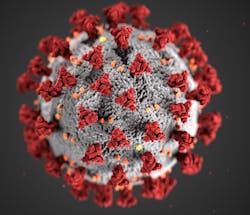UPDATED: Department Of Labor Guidance on Paid Sick and Medical Leave Under Families First Coronavirus Response Act
Editor's note: The following is offered with no editorial revision, as this information will bear directly on businesses within our industry.
UPDATED APRIL 3, 2020:
The U.S. Department of Labor announced more guidance to provide information to workers and employers about how each will be able to take advantage of the protections and relief offered by the Families First Coronavirus Response Act (FFCRA), which went into effect April 1, 2020.
The guidance announced today includes a comprehensive webinar explaining which employers are covered by the new law, which workers are eligible, and what benefits and protections the law provides. The Wage and Hour Division (WHD) also added additional Questions and Answers to its website in response to the questions most frequently received to-date through its extensive stakeholder engagement. Workplace posters translated into additional languages, which fulfill notice requirements for employers obligated to inform employees about their rights under the FFCRA, have also been added to WHD’s website. To view the webinar and other guidance materials, visit www.dol.gov/agencies/whd/pandemic.
“The Wage and Hour Division continues to prioritize providing the information that workers and employers need to be fully informed about their rights and protections under this critical new law,” said Wage and Hour Division Administrator Cheryl Stanton. “We continue to incorporate the tremendous amount of feedback we have received from stakeholders as we develop new guidance. We want to ensure that we’re providing the information the American workforce needs quickly, clearly, and in the most accessible format possible.”
The guidance announced today adds to a growing list of compliance assistance materials published by WHD, including a Fact Sheet for Employees and a Fact Sheet for Employers, available in both English and Spanish, Questions and Answers about posting requirements, and a Field Assistance Bulletin describing WHD’s 30-day non-enforcement policy.
The FFCRA helps the United States combat and defeat the workplace effects of COVID-19 by giving all American businesses with fewer than 500 employees tax credits to provide employees with paid leave, either for the employee’s own health needs or to care for family members. The law enables employers to keep their workers on their payrolls, while at the same time ensuring that workers are not forced to choose between their paychecks and the public health measures needed to combat the virus.
WHD provides additional information on common issues employers and employees face when responding to COVID-19 and its effects on wages and hours worked under the Fair Labor Standards Act and on job-protected leave under the Family and Medical Leave Act at https://www.dol.gov/agencies/whd/pandemic
For more information about the laws enforced by WHD, call 866-4US-WAGE, or visit www.dol.gov/agencies/whd
For further information about COVID-19, please visit the U.S. Department of Health and Human Services’ Centers for Disease Control and Prevention.
